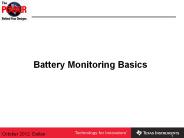Basic Concepts and Communication Models - PowerPoint PPT Presentation
Title:
Basic Concepts and Communication Models
Description:
... simultaneous encoding and decoding of messages ... Interpretation involves the encoding and decoding of symbols transmitted during the interaction. ... – PowerPoint PPT presentation
Number of Views:33
Avg rating:3.0/5.0
Title: Basic Concepts and Communication Models
1
Basic Concepts and Communication Models
- An introduction to thinking about communication
in organizations
2
Some Course Assumptions
- Information in this course is valuable to the
extent that you can use it - Were trying to provide you with a repertoire of
skills to meet a variety of situations - We want to go beyond skills and techniques to
understand the underlying situationtheory has
its uses!
3
Some Fundamental Concepts
- Context
- Process
- Truth
4
Some Initial Observations
- A communication axiom-- You cannot not
communicate - Always judge communication in terms of context
- Language is an inherently arbitrary symbol system
- Communication is polysemic
5
Communication and Organizations
- Communication is not a secondary or derived
aspect of organizations--it is not a helper - Communication is an intrinsic, inherent, defining
feature of organizations - No human relationship could be maintained, no
organizational objective achieved, no activities
coordinated and no decisions reached without
communication.
6
Unique Perspectives on Communication in
Organizations
- Downward communication (superior to subordinate)
- Upward communication (subordinate to superior)
- Horizontal communication (among colleagues)
- Informal communication (the grapevine)
7
Comparative Communication Models
- Early models depicted linear movement
- S-gtM-gtC-gtR
- More accepted view now is transactional/transforma
tional model of communication--simultaneous
encoding and decoding of messages - DoddCommunication is defined as participants
interpreting information by interacting through
sending and receiving messages across a channel
in an organizational context.
8
Critical Elements in Communication Models
- Participantsuniquely situated actors in a
particular context. Those participants are
affected by their own particular frame of
referencetheir culture, gender, level of
education, organizational rank, etc. - Interpretationinvolves the encoding and decoding
of symbols transmitted during the interaction.
Those processes are not uncomplicated. - Context of the workplacecontext is always
important in communication, the workplace brings
special challenges to context.
9
Critical Elements continued
- Channel--importance, needs of receiver, amount of
feedback needed, permanent record?, cost,
formality level, is it live or is it mediated? - Feedback--advantages and disadvantages
- Noise--external and internal, technical or
semantic































